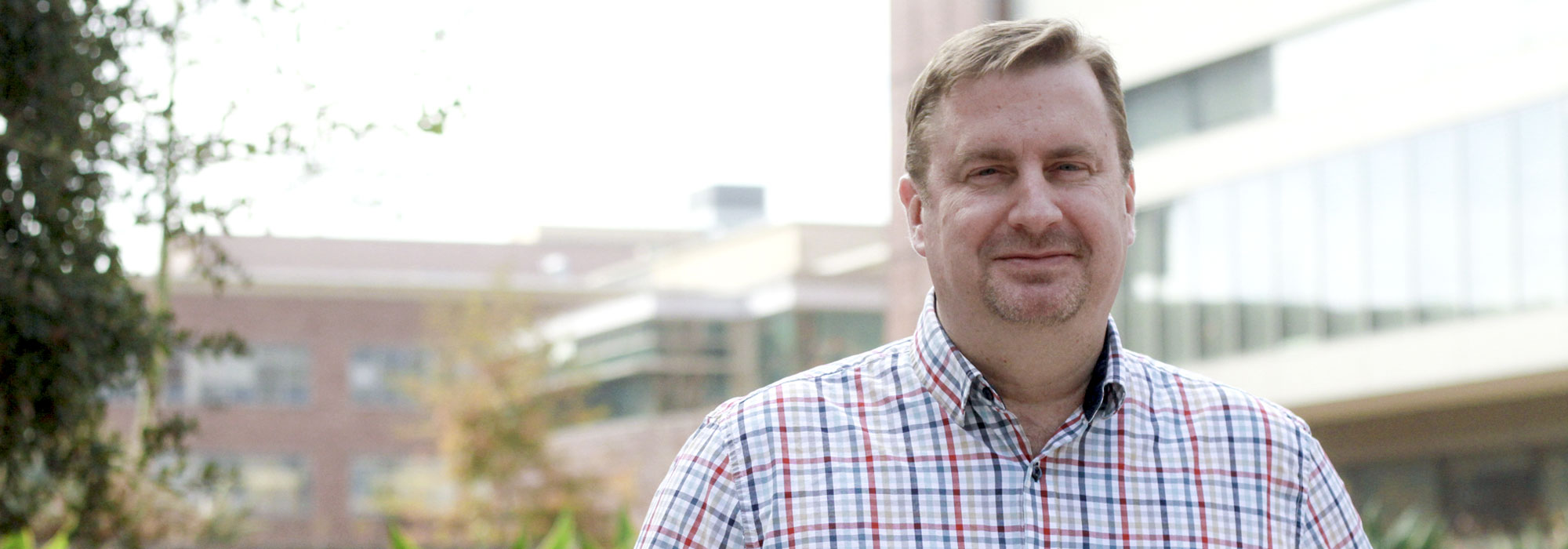
Professor Tim Fisher joined UCLA in 2017 as a faculty member in the Mechanical and Aerospace Engineering Department. He leads the Nanoscale Transport Research Group, which looks at transport processes by electrons, phonons, photons, and fluids, with an eye toward addressing problems in aerospace, micro- and nanoelectronics, and sensor systems. Fisher is also an adjunct professor in the International Centre for Materials Science at the Jawaharlal Nehru Centre for Advanced Scientific Research (JNCASR) and is the co-director of the Joint Centre on Nanomaterials for Clean Energy and Environmental Sensors. Prior to UCLA, Fisher was the James G. Dwyer Professor in Mechanical Engineering at Purdue University. He is also the founding director of the Center for Integrated Thermal Management of Aerospace Vehicles, supported by the U.S. Air Force and leading aerospace companies.
Can you describe what nanoscale transport is, and what kinds of applications come out of research in these areas?
Nanoscale transport essentially describes how something like heat or electricity flows through very small objects. We find that drastic restrictions in the size of an object can dramatically change these flows. In some cases, it’s like trying to drink a milkshake out of a coffee stirrer, meaning that the transport is greatly diminished. But counterintuitively, sometimes the small sizes actually make things flow better, and we spend much of our time working on those materials.
How did your interests in engineering start? And what is the next big problem that your lab is currently looking at?
I started thinking about engineering a little bit in high school, but to be completely candid, my professional goal until I was far too old was to play for the Chicago Cubs (sorry, I’m slowly learning to like the Dodgers). Unfortunately, I realized a bit too late that I couldn’t hit a good fastball. Anyway, my engineering career really started to take form when I participated in an undergraduate research program at Cornell, and I’ve been involved in research and teaching (on both sides) ever since then. Today, my lab is working on many topics related to how heat flows from temperature-sensitive devices such as pulsed lasers and radar electronics. We’re trying to take a much more active approach in cooling these bursts of heat by controlling the systems in real time and on demand.
What are some of your teaching goals here at UCLA, in particular for undergraduates?
At the undergraduate level, I’m hoping to bring some of the exciting new developments from the so-called ‘maker movement’ into the fluids and heat transfer curriculum. For example, I’m planning some hands-on activities for thermodynamics students in which they use common plastic packaging techniques – such as vacuum food packaging, poly tubing, Luer lock fittings, or syringe tubes – to create a fluid cycle that produces a pronounced change in fluid temperature caused by controlled de-pressurization. Changes in temperature will be measured by inexpensive infrared cameras attached to smart phones. The students will be able to relate pressure and temperature changes caused by heat uptake and release in a simple fluid cycle that they fabricate. In the end, I hope that students will learn the basic principles of thermodynamics while also appreciating that these new micro-controllers, which have been so amazingly transformative in the field of robotics, can also be used in many other applications, too.
